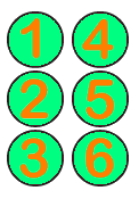Second Vision
On January 4, 1809, inventor and educator Louis Braille was born near Paris. He played and “helped’ his father who made harnesses and other leather goods in his workshop. On one fateful day, playing with an awl, a sharp, pointed tool for piercing leather, Braille accidentally punctured his eye. Infection soon spread to the other eye and he was blind.
The adults in his life ensured he received a good education. He was a good listener, a fine speaker, and endlessly curious. Braille earned a scholarship to the school for blind youth in Paris where his lessons included French grammar, Greek, Latin, and algebra. He learned to play the cello and the organ.
At the institute, Braille learned to read. At first he read from large books with letters embossed or raised on a page. The letters were so large, it took ages to remember how they were sequenced to finish a sentence and continue. But Braille read all 14 embossed books at the school. He learned the “night writing” system that the French artillery used to communicate in the dark of night. It featured embossed dots and dashes based on phonetics. These also took up a lot of space on a page. It was slow and clumsy, requiring the translation of symbols for sounds into letter combinations then into words.
In his early teens, Braille had his own ideas about the strengths of each system. Embossed communication was useful. Dots were easily recognizable. He decided to create his own system that would be a compact and comfortable size to handle on a page. It would eliminate the extra step of sound translation and be as directly readable as any other written language.
Braille created his 6-dot cell system based on normal spelling. He added numbers and punctuation. He even turned his old adversary into a stylus and was soon using an awl-based instrument to perforate paper in raised dots to write! The school’s director encouraged the institute’s students to use the elegant code. Braille became a teacher at the institute. He was 19 years old.

France eventually adopted Braille as the international writing system for the blind in 1878; English-speaking countries, in 1932. Braille’s system is easily applied to every other alphabetically written language in the world. His code has enabled generations of blind and sight-impaired people to become full participants in their societies – reading, writing, accounting, teaching at every level, practicing law and other professions that require fluency with the printed word.
As modern technologies impact communications, the compact Braille cell system is ready for its next adventure!
B Bondar / Real World Content Advantage